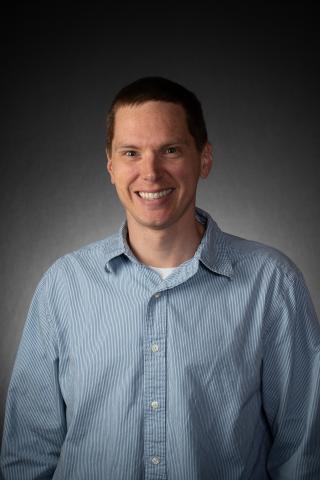Q&A: DU Professor Uses Lasers to Democratize Quantum Computing
Mark Siemens' adventurous research earns him $1 million grant
Computing giants like Google and Microsoft employ hundreds of scientists and spend millions of dollars trying to better understand and utilize quantum physics for next-generation computing. Yet, Mark Siemens, associate professor in the University of Denver’s College of Natural Sciences and Mathematics, threatens to render those operations obsolete with the help of your average, everyday laser pointer.
Siemens’ research focuses on the humble laser beam’s application as a tool for quantum physics. By his own estimation, it explores a completely novel route toward quantum computing, making it a little adventurous, definitely ambitious and full of uncertainty. That’s exactly what caught the attention of the W.M. Keck Foundation, which recently awarded Siemens a $1 million grant.
Along with Mark Lusk, a professor at the Colorado School of Mines, Siemens and his research team will use lasers to make the elusive field of quantum computing more accessible.
Shortly after publication, Google announced the successful completion of a critical quantum computing test using their "Sycamore" quantum computer. We followed up with Mark Siemens to learn more about this new development. Scroll to the end of the article for his response.
What exactly is quantum physics?
Quantum physics is how stuff really works, but we don’t really see it in everyday life. As you get down to smaller and smaller and smaller scales, these quantum phenomena start to emerge — a really surprising world dominated by uncertainties and probabilities where you can't tell what state a particle is in until you measure it.
Your research examines laser beams as an application for quantum mechanics. How does that work?
If you want to see quantum mechanics at a larger scale, people [look to] quantum fluids. A quantum fluid is something that is coherent or that has like a single function for the entire thing over its entire size and can move without any friction slowing it down. [One example is] superfluid helium. You take [a cup of] helium and get it really, really cold, and at some point, it’ll start climbing up the walls of the cup and come around the sides because it has no viscosity at all. Another quantum fluid is a Bose-Einstein Condensate. Work on these quantum fluids [has led to] Nobel prizes in physics.
With these traditional quantum fluids, you have to get them really, really cold, because any interactions with the outside world degrade the quantum purity and the coherence, the “macroscopic oneness,” of the single quantum state. If there’s any heat flow into the system at all, it can destroy the perfect quantum state you’ve set up.
Our proposal is to look at a system that doesn’t interact with outside thermal fluctuations and where coherence is really well understood. That’s a laser. The thing that makes a laser [useful is] that it’s coherent, which means that the entire state is moving together. The laser is sort of like a marching band all marching in step in a line — very ordered and structured, whereas light from a light bulb is like shoppers on Black Friday. Our thought is, let’s leverage the robust coherence that’s built into the laser to try to understand some of these quantum science problems.
So how do you do that?



